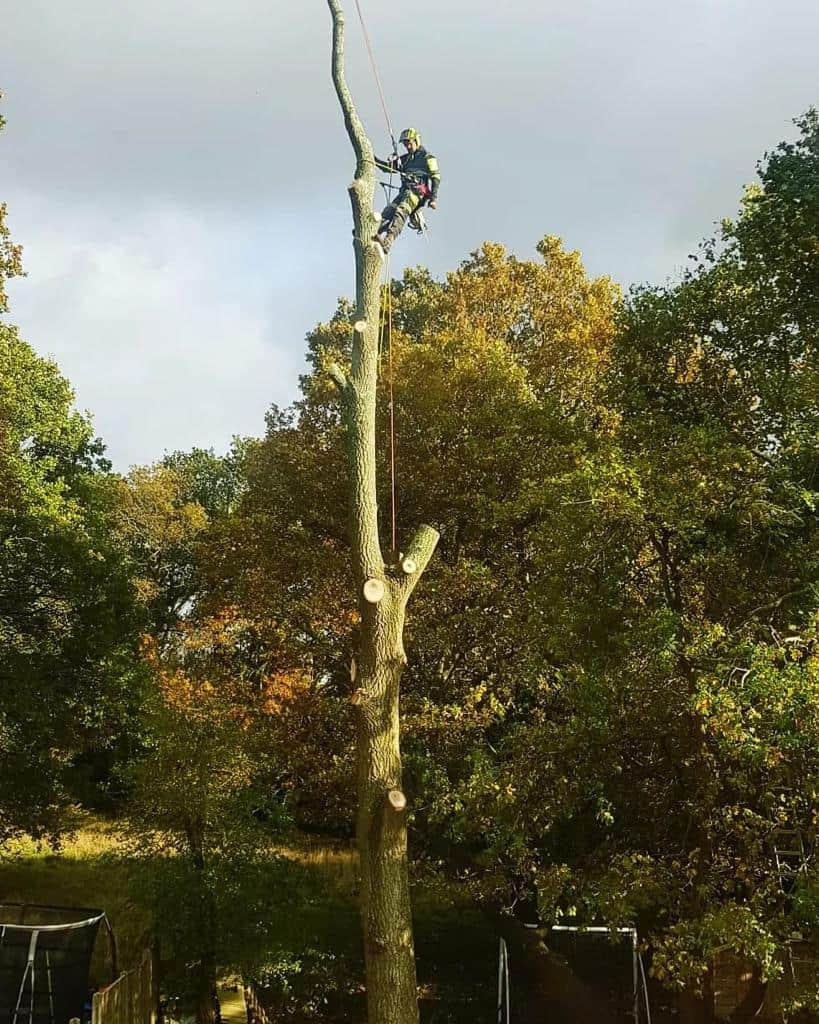Healthy trees are an integral part of any landscape, providing shade, aesthetic appeal, and ecological benefits. However, hidden issues can sometimes develop within a tree, compromising its health and safety without immediate visible signs. For property owners in Sharpness, Gloucestershire, understanding how to identify these hidden problems early can save time, money, and the need for extensive tree surgery.
Why Early Detection Matters
Spotting tree issues early allows for preventive care, which:
- Prolongs the tree’s life.
- Reduces the risk of damage to surrounding property.
- Prevents costly and invasive surgery.
Regular inspections, combined with professional advice, can make all the difference in maintaining the health of your trees.
Common Hidden Tree Issues and How to Identify Them
1. Weak or Decaying Branches
What to Look For:
- Branches with discoloured or peeling bark.
- Deadwood that feels dry and brittle.
- Cracks or splits in the branches.
Why It’s an Issue:
Weak or decaying branches can fall unexpectedly, posing safety risks to people and property.
2. Root Problems
What to Look For:
- Soil upheaval or exposed roots.
- Fungal growth around the base of the tree.
- Trees leaning or appearing unstable.
Why It’s an Issue:
Healthy roots are essential for a tree’s stability and nutrient absorption. Root problems can lead to poor growth, instability, or even the tree’s death.
3. Fungal or Insect Infestations
What to Look For:
- Mushrooms or fungal growth on the trunk or near the base.
- Holes in the bark, indicating burrowing insects.
- Presence of pests such as aphids or caterpillars.
Why It’s an Issue:
Fungal infections and insect infestations can weaken the tree’s structure and compromise its health over time.
4. Cavities and Cracks in the Trunk
What to Look For:
- Hollow areas or cavities in the trunk.
- Vertical cracks or splits in the bark.
Why It’s an Issue:
Cracks and cavities can weaken the structural integrity of the tree, making it prone to breakage.
5. Poor Leaf Health
What to Look For:
- Discoloured, wilting, or deformed leaves.
- Sparse foliage or premature leaf drop.
- Leaves with spots, holes, or mould growth.
Why It’s an Issue:
Unhealthy leaves are often a sign of underlying issues such as disease, pest infestations, or inadequate water and nutrients.
How to Monitor Your Trees Regularly
Seasonal Inspections
Inspect your trees at least once each season to identify any changes or potential problems. Pay special attention after storms or extreme weather events.
Look from All Angles
Examine the tree from the base to the canopy, checking the trunk, branches, and roots. Use binoculars to inspect high branches if necessary.
Check Surrounding Areas
Look at the soil, nearby plants, and structures around the tree. Changes in these areas can indicate hidden issues, such as root damage or shifting soil.
When to Call a Professional
Signs You Shouldn’t Ignore
- Large branches have fallen or are at risk of falling.
- The tree is leaning more than usual.
- Fungal growth or pests are widespread.
- Cracks or cavities are significant.
The Role of Professional Tree Surgeons
Professional tree surgeons have the tools and expertise to assess tree health accurately. They can identify hidden issues and recommend appropriate treatments, from pruning to tree surgery, to address the problem effectively.
Conclusion
Spotting hidden tree issues before they require surgery is key to maintaining the health and safety of your landscape. By conducting regular inspections and seeking professional advice when necessary, you can protect your trees and ensure they remain a valuable part of your property.
For expert tree care services in Sharpness, Gloucestershire, contact EM Tree Surgery Sharpness. Let us help you keep your trees healthy and thriving for years to come.
Call us on: 01549 470 125
Click here to find out more about EM Tree Surgery Sharpness
Click here to complete our contact form and see how we can help with your trees needs.

